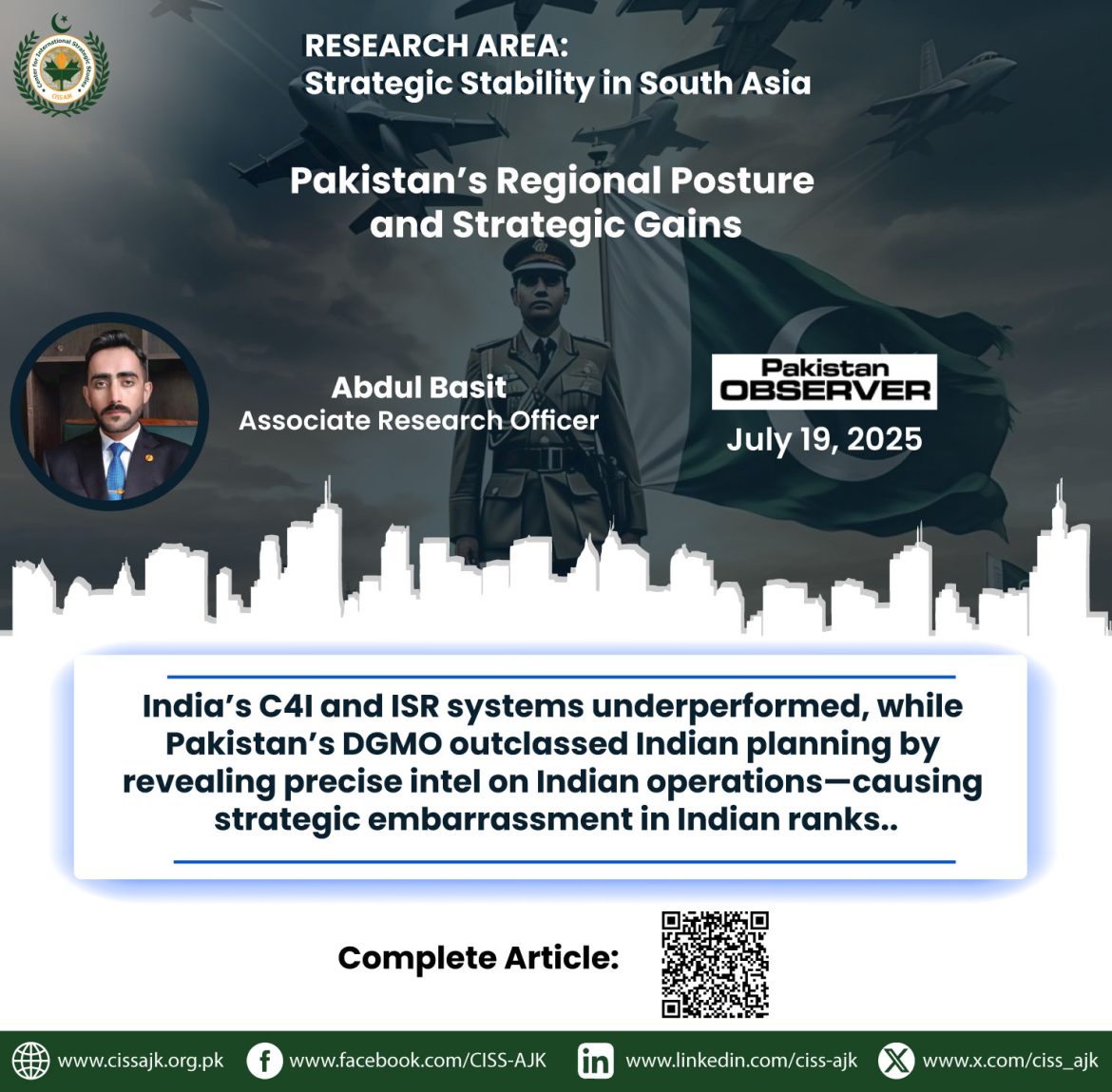ON the midnight of May 6-7, 2025, India launched Operation Sindoor against Pakistan by attacking non-combatants at multiple locations.
Pakistan responded resolutely and proportionately, targeting Indian military assets at various sites. The escalation was unprecedented and while Pakistan was dominating the escalation ladder, eventually, with the US mediation, both countries agreed to a ceasefire. The outcome of the conflict was encouraging for Pakistan, amid its strategic and diplomatic advantages over India during and after the escalations. As a strategic manoeuvre, Pakistan’s Operation Bunyan um Marsoos disrupted India’s goal of dehyphenation, as India’s shift from aspiring to Indo-China parity to enforced Pak-India rehyphenation damaged its prestige as a self-styled major power. Pakistan dictated the escalation imposed by India, emerged as a net regional stabilizer, reset Kashmir and reshaped global optics in its favour.
In the aftermath of the war, international observers also recognized Pakistan’s strategic and diplomatic advantages and highlighted the losses India suffered from Pakistan’s precise strikes. At first, India denied any losses; however, Indian Chief of Defense Staff, Gen Anil Chauhan, during a discussion with international observers at the Shangri-La Dialogue, admitted to the loss of Indian military assets without specifying the extent. Later, the Indian defense attaché in Indonesia, Captain Shiv Kumar, confirmed that the Indian Air Force lost jets on the night of May 6/7, 2025. Subsequently, Indian Deputy Army Chief Gen. Rahul Singh publicly acknowledged several shortcomings in India’s military performance during the recent conflict in his notable speech at the FICCI lecture. Compared to Pakistan’s superior integration and operational effectiveness, he recognized a significant gap in India’s capabilities in Intelligence, Surveillance, Reconnaissance (ISR) and Command, Control, Communications, Computers and Intelligence (C4I). He also admitted that India’s highly touted air defense system had underperformed. Furthermore, Gen Singh revealed that Pakistan’s Director General Military Operations (DGMO) demonstrated Pakistan’s strong intelligence and surveillance prowess by providing his Indian counterpart with detailed information about Indian troops’ position, movements and operational plans, shocking the Indian military.
To deflect these revelations, the general attempted to portray the conflict as a broader confrontation, claiming that India was effectively fighting three adversaries, Pakistan, China and Türkiye, on a single front. He alleged that both China and Türkiye were providing logistical, tactical and technical support to Pakistan, framing the war as a multi-front challenge. However, he did not mention the substantial foreign military hardware that India has been using for decades. Countries like Russia, France and, notably, Israel have been selling weapons to India. Significantly, Israeli drones were also used by India in the recent four-day combat, where several of them were shot down by Pakistani forces.
While attempting to undermine Pakistan’s achievements by attributing them to foreign assistance, India conveniently overlooks the extensive arms and technological procurement it has received itself, a clear attempt to mask its shortcomings in strategic competitiveness. It is now clear that Pakistan exercised strategic and diplomatic superiority over India during the recent escalations imposed by India. However, the propaganda of one border, three enemies floated by the Indian Deputy Chief of Army Staff is undermined by a lack of concrete and logical evidence. These attempts reflect India’s exhaustion in its failed efforts against Pakistan. India failed to achieve its objectives under Operation Sindoor, highlighting the absence of operational and strategic justification. Trying to frame the relations of states based on defense cooperation and procurement as partners in war is an incorrect and illogical assertion.
Through these efforts, India is trying to restore its status as a so-called net security provider at a time when even regional states have exercised India out policy. Moreover, in the aftermath of the war in May, India engaged in a smear campaign against Pakistan on various fronts, including pledges to FATF and propaganda about Pakistan developing Intercontinental Ballistic Missiles. However, this time, international actors are not willing to buy such fabricated claims. In contrast to India’s narrow-minded behaviour, Pakistan has built relationships in the international community based on principled diplomacy, lasting partnerships, mutual respect and peace, demonstrating itself as a net regional stabilizer.
—The writer is Associate Research Officer at the Centre for International Strategic Studies AJK and also an alumnus of NESA, NDU Washington.



